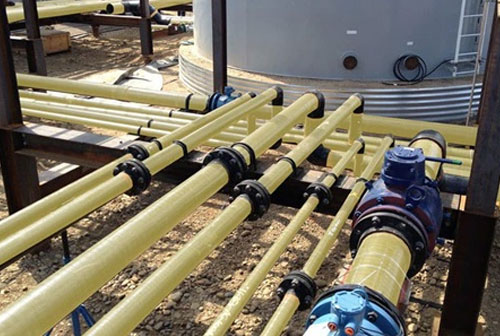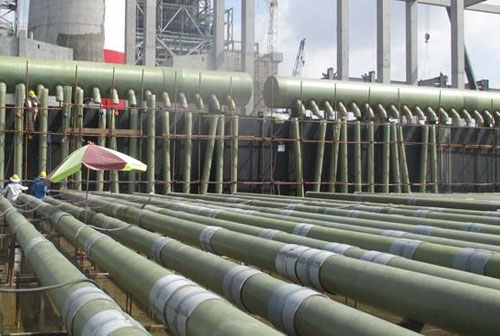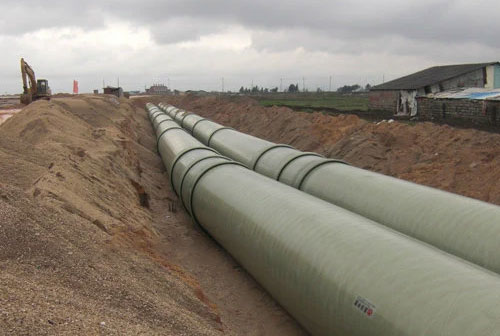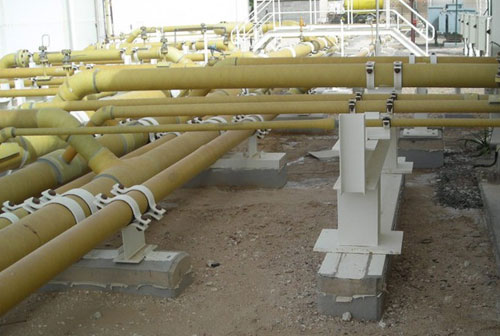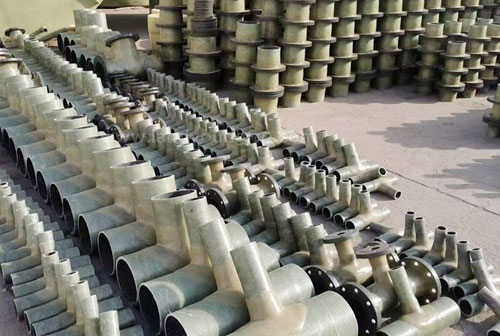In the realm of piping systems, Fiberglass Reinforced Plastic (FRP) pipe, also known as fiberglass pipe or GRP pipe, has emerged as a versatile and durable alternative to traditional metal pipes. This composite material, composed of fiberglass fibers embedded in a resin matrix, offers a combination of strength, corrosion resistance, and lightweight properties that make it suitable for a wide range of applications. However, as with any material, FRP pipe comes with its own set of advantages and disadvantages that should be carefully considered before making a selection.
Understanding FRP Pipe:
FRP pipe is manufactured by impregnating continuous fiberglass strands or filaments with a thermosetting resin, such as epoxy or polyester, and then curing the mixture under heat and pressure. The resulting composite material exhibits a unique blend of properties:
Strength: FRP pipe possesses remarkable tensile strength, capable of withstanding high pressures and impact forces.
Corrosion Resistance: The non-metallic nature of FRP makes it highly resistant to corrosion from chemicals, acids, and alkalis, unlike metal pipes that are prone to rust.
Lightweight: FRP pipe is significantly lighter than metal pipes, simplifying handling, transportation, and installation.
Smooth Inner Surface: The smooth inner surface of FRP pipe minimizes friction and reduces the risk of buildup, promoting efficient flow and minimizing pressure losses.
Electrical Insulation: FRP pipe is an excellent electrical insulator, making it suitable for applications where electrical conductivity is a concern.
Applications of FRP Pipe:
The unique properties of FRP pipe have made it a popular choice in various industries and applications:
Chemical Processing: FRP pipe is widely used in chemical processing plants to transport corrosive chemicals, acids, and alkalis due to its superior corrosion resistance.
FRP pipe water and wastewater treatment
Water and Wastewater Treatment: In water and wastewater treatment facilities, FRP pipe is employed for conveying treated water, wastewater, and slurries due to its durability and resistance to harsh chemicals.
Oil and Gas: In the oil and gas industry, FRP pipe is utilized for transporting petroleum products, natural gas, and water injection fluids due to its strength, corrosion resistance, and lightweight properties.
Food and Beverage: In food and beverage processing plants, FRP pipe is used for conveying food products, beverages, and cleaning solutions due to its smooth inner surface, hygiene properties, and resistance to corrosion.
Marine Applications: In marine environments, FRP pipe is employed for saltwater piping systems, desalination plants, and offshore applications due to its corrosion resistance and ability to withstand harsh conditions.
Advantages of FRP Pipe:
Superior Corrosion Resistance: FRP pipe's non-metallic composition makes it highly resistant to corrosion from chemicals, acids, alkalis, and saltwater, extending its lifespan and reducing maintenance costs.
Lightweight Design: The lightweight nature of FRP pipe simplifies handling, transportation, and installation, particularly for large-scale projects, and reduces support structure requirements.
Smooth Inner Surface: The smooth inner surface of FRP pipe minimizes friction and pressure losses, leading to improved flow efficiency and reduced energy consumption.
Electrical Insulation: FRP pipe's electrical insulating properties make it suitable for applications where electrical hazards are a concern, minimizing the risk of electrical shocks.
Chemical Versatility: FRP pipe can handle a wide range of chemicals, including acids, alkalis, solvents, and hydrocarbons, without compromising its integrity.
Disadvantages of FRP Pipe:
Higher Initial Cost: FRP pipe may have a higher initial cost compared to traditional metal pipes, although this can be offset by lower long-term maintenance and replacement costs.
Susceptibility to UV Radiation: Prolonged exposure to UV radiation can degrade the resin matrix of FRP pipe, making it less suitable for outdoor applications without proper protection.
Limited Temperature Range: FRP pipe has a limited operating temperature range compared to some metal pipes, and may not be suitable for extreme temperature applications.
Repair Challenges: Repairing damaged FRP pipe can be more complex and require specialized skills compared to repairing metal pipes.
Fire Performance: FRP pipe may not have the same fire resistance as some metal pipes.
 +86 15303735673
+86 15303735673 Jessica@frpzs.com
Jessica@frpzs.com
 Technical Data
Technical Data


